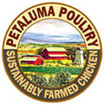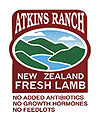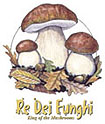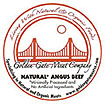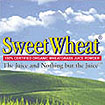| The
Slow Food Way
Ancient Tastes of
Tuscany
Story and Photographs By: Stephen
Ashton
While
in Florence for the annual Festival dei Popoli,
the prestigious and committed 44 year old (the world's first)
documentary film festival, I happened upon a curious brochure
that enigmatically described “Antichi
Sapori di Toscana. A Forum and Festival of
Ancient Tastes of Tuscany. Upon investigation
I learned that this event, now in its 10th edition, spans
three days and has been always dedicated to the experience
of traditional Tuscan cuisine, foods and wines of the region.
This was too good to pass up! I quickly made some arrangements,
changed my plane ticket (not so easily done in Italy) and
boarded a bus for the little town of Lastra a Signa
just twenty minutes away. By the time I arrive, the December
Tuscan sun had set. I was greeted by Manila, the director
of the Tourist Office, and we went off on foot through the
narrow streets in the old town. Lastra a Signa
was a favorite place for the genius sculptor and architect
Filippo Brunelleschi who designed and built
the freestanding Cupola of the Duomo
(Dome of the Cathedral) in Florence. Brunelleschi's contributions
to Lastra a Signa include the still standing magnificent
550 year old stone city walls and towers.
|
Click
on Images for Captions |
Adjacent
to the 15th Century wall is a large tent which houses the
Ristorante “Antichi Sapori”
that is operated by volunteer chefs and servers. Long tables
are filled with mostly local gastronomes… I am honored
to be the only foreign journalist or for that matter the
only North American at the event.
I am delighted to discover that this year, for the first
time, the town-sponsored event has teamed up with the Italy-based
Slow Food movement. I had previously known
about the Slow Food movement…or thought I knew. I
understood Slow Food to be organized into
“Convivia”groups that get together
for extended meals… plenty of time to savor the nuances
of every course. “Ah,”I said, “this is
going to be fun!”
What
I soon find is that Slow Food is indeed all that and more!
The event intends to make the experience not only one of
tasting traditional dishes, but a celebration of foods that
have been on the verge of extinction! Through a series of
remarkable events (see accompanying article on the Slow
Food Movement) and the vision of Italian writer/philosopher
Carlo Petrini, nearly all of the foods
tasted at the Antichi Sapori di Toscana
have not only been identified in an official capacity, or
“preserved” in a small way, but more importantly,
are re-established as commercially viable enterprises known
as “Presidia.”These
Presidia initiatives work hand in hand with the
Ark of Taste, which you will learn about
in this article. I am now prepared to enjoy the tastes of
ancient Tuscany the Slow Food Way.
Stephen
Ashton travels the world in search of independent films
to be featured at his Wine Country Film Festival, held in
the Napa and Sonoma regions of northern California each
summer. His love of food and culture leads him into great
escapades that he translates into stories for Food&Beverage
International magazine. We welcome your comments. |
ARK
OF TASTE
In keeping with Slow Food's
commitment to biodiversity, preservation of endangered cuisine
and the cultures that they represent, Slow Food established
a symbolic “Ark of Taste (ark”as
in “Noah's) “into”which endangered
food and agricultural products –and especially almost
forgotten “flavors”can be “placed.”Such
a process is akin to an animal or bird being listed on the
U.S. Fish and Wildlife Service “Endangered
Species List”in that simply by declaring
a plant or animal as “endangered”
sets in motion a conscious effort to find
ways to preserve the species.
In
this case, the aim of the Slow Food Ark of Taste
is to rediscover, catalogue, describe and promote these
almost forgotten flavors, including certain recipes and
cooking techniques that are in danger of slipping away.
So it is appropriate for the “Ancient Tastes”event
to showcase many of these foods. But in order for these
foods and flavors to not only be preserved, but to be accessible
to the public, Slow Food developed initiatives
known as The Presidia – from the
Latin meaning “to protect” or “garrison”which
are economic support entities (consortia of farmers,
trade groups, marketing organizations) that create sustainable
futures for the special foods, animals and precious flavors
in all parts of the world.
Appetizer
My first dinner at Antichi Sapori is
all based on dishes some age old –of the traditional
Tuscan farm and many of them are foods that have been symbolically
“taken into”The Ark and now
have “Presidia” enterprises
to support them. The meal starts with a delicious Antipasti
of Pecorino Cheese with Honey and a Vegetable
Frittatini. Pecorino Cheeses from
the mountains of Pistoia are special in that they must be
made only from raw un-pasteurized sheep milk by family farmers
with 100 year old methods. The sheep are of a certain breed
–the Massese –which
have dark spiraling horns and black fleece. Cheeses each
seem to have their “soul mates”of certain foods
and wines, and Pecorino's soul
mate is Castagna (Chestnut)
Honey, which has a strong bitter-sweet flavor that is killer
with the “Abbucciato”(firm
but not dried) Pecorino. The Tuscan Frittatini
(little Frittata) or small omelet that is typically
served cold is in this case spiked with chunks of potatoes
and green vegetables. Matched with the Pecorino
and Castagna Honey, it provides
a delicious combination of flavors that whets the appetite
for the next course.
The
Primi Piatti
(First Course)
is a delicious Pappardelle (fresh homemade
wide pasta) with ragu that is generously endowed with
succulent Rabbit. Actually, the traditional Tuscan table
features very little pasta, with the exception of Pappardelle.
But rather the famous Tuscan bread is what is used in a
myriad of dishes… especially if it is a bit stale!
Tuscan cuisine has been best described as a “Bread
Based Cuisine.”So our next dish is a deeply
flavored typical old Tuscan delicacy, Ribollita
– or reheated Tuscan bread soup. Ribollita
means re-boiled and it is really Minestra di
Pane (Bread Soup) that has aged a
day or so and is reheated after the flavors have had a chance
to sink in and marry. The soup is typically made with black
leaf kale, pre-soaked white beans, onion, carrot, celery
and parsley, olive oil, a bit of tomato paste, shredded
beet greens, potatoes, seasoning of salt, pepper and fresh
thyme, and thinly sliced day old Tuscan bread. After cooking
the vegetables, place the bread in layers in a terracotta
oven-ready pot and cover each layer with the vegetable soup
and olive oil.
Over dinner, I am briefed on the role of Slow Food in the
current festivities, and prepared for the coming days when
we will learn how to prepare nearly lost dishes and taste
the products of some of the more than 25 Tuscan Presidia.
Secondi
Piatti
(The Main Course)
is served with great excitement because the aromas of the
Pollo e Coniglio in Umido, (Rabbit
and Chicken Stew,) which has been cooking for the last
hour, wafted through the room enticing us. The traditional
Tuscan kitchen is blessed with the bounty of its global
traders, including a myriad of seasonings. According to
the writer/historian Marco Lolli, many of the once common
wonderful fragrances that came from the Tuscan kitchen have
“almost disappeared.” The Antichi Sapori
event reintroduces many of the spices and seasonings including
pepolino (thyme), persia
(sweet marjoram), nepitella (calamint),
menta (mint), salvia (sage),
ramerino (rosemary), and parsley.
Also used are Finocchio (fennel)
seeds, chiogi di garofano (cloves),
canella (cinnamon), and most dishes
are well peppered. Peperoncino (red
chili pepper), cipolla (onion),
scalogno (shallot), porro (leek)
and zenzero (ginger) are part of the
mix as well, but the main aromatic is, not surprisingly,
aglio (garlic).
The
Stew is served with a side dish of White Beans
with Olive Oil and Salad.
Tuscan cuisine will find many traditional dishes made with
the nutty flavored Cannellini White Bean,
which is said to have originated in Argentina. These old
farm recipes, are amongst Italy's most hardy and tasty dishes.
For dessert we have Cenci pastries
– literally “rags,”these
light fried pastries are especially tasty when dipped in
5 year old Vin Santo Dessert Wine. The
light pastries are made with flour, sugar, egg, bicarbonate
of soda, vin santo and flavored with aniseed, vanilla and
orange skin zest and dusted after frying with confectioners
sugar.
Luckily
I am able to get into a sold-out workshop on the preparation
of a rare Tuscan delicacy –Roventino.
Although it sounds as if this dish should be from the murky
forests of Count Dracula's Transylvania, this fried pig
blood frittatine dates back to the Florentine middle-ages
and is quite delicious. The workshop, attended by Slow
Food aficionados, is about to start when I enter
the community center kitchen. We learn that this nutritious
dish is in danger of becoming extinct because the Art of
Butchering in the old way is being lost.
It is now virtually illegal in Italy to have a small local
butcher shop that can slaughter as well as cut fresh meat.
Roventino requires fresh blood, which is
impossible to purchase, so the only chance to taste is if
you happen upon a farm-raised pig at slaughter time…
and the farmer is willing to share the treasure. The workshop
moves into the kitchen where the tradition is passed on
from the farmers and chefs to us. We learn how to prepare
and cook this unique dish.
Preparation
of Roventino
Into a liter (in our case, a big
pot, so everything was proportionate) of fresh pig
blood, whisk in two tablespoons of plain white flour that
has been dissolved in vegetable broth, and a couple of pinches
of salt, pepper, minced garlic, grated lemon peel, fresh
rosemary and a pinch of ground nutmeg.
Procedure:
Into a small red hot frying pan put
some lard, melt on a high flame. Then put a small ladleful
of blood into the pan and LEAVE IT until the surface bubbles
and slightly blackens. Then the fun part! Each “frittatine”
(almost the consistency of a pancake) must be individually
flipped! This takes some practice, so expect to miss the
pan a few times. I am lucky and my first try turns out pretty
good!
After cooking the other side for a minute or two, slide
the Roventino onto a plate, sprinkle with parmigiano reggiano
or aged hard Pecorino cheese and serve HOT. This tasty,
hard to find, winter dish gives new meaning to the Tuscan
phrase ““We use every part of the pig but the
squeal!"
|
THE
PRESIDIA OF SLOW FOOD
As we approach the elegant arches (decidedly
not “golden) of the Spedale di Sant’Antonio,
aromas of the rescued foods of the Presidi waft through
the air. Products ranging from raw sheep-milk Mountain
Pecorino Cheeses; delicious dried meats like Mallegato
Sanguinaccio, or blood sausage made with pieces
of lard, nutmeg, cinnamon, pinenuts and thickened with water-soaked
bread; and Prato Mortadella, a large diameter
sausage from Prato that came into being
in Tuscany as a means of using up leftover cured meats and
the poorer cuts of pork.
Among
the featured food enterprises are rare animals such as the
Valdarno Chicken, which has been preserved
by the diligent efforts of Francesca Romana Farina
and her associates from Montevarchi in
the Tuscan province of Arezzo, and the Palamita
fish (a kind of Tuna) of the Tuscan
Archipelago Islands. This wonderful fish is served fresh,
dried, smoked, and preserved. But it is the Mediterranean
Bottarga (grey mullet) roe that
is particularly prized. Harvested whole and preserved in
their original sac, the roe has been a delicacy since ancient
times. The name Bottarga is said
to have evolved from the Arabic phrase for raw fish eggs:
“bot-ah-rik.”The art of preserving fish
and roe is nowhere more developed than in Orbetello in the
Tuscan province of Grosetto and the Archipelagos.
One
of the arched halls housed an Enoteca
(Wine Store) offering tastings of Florentine and regional
wines from small family wineries. Although most of the Presidi
foods are pricy, appreciative patrons sampled and bought
for three days, providing encouragement to these committed
food producers.
On to dinner at Ristorante “Antichi Sapori”where
Roventino is again served with a tasty
and hearty dish –Pappa al pomodoro
– A typical Tuscan “Children's Food.”This
vegetable soup or stew, based on day-old stale Tuscan bread
soaked in chicken or beef stock or water for 10 minutes,
then cooked with tomato, basil, garlic and olive oil, is
perfect to take the chill off a winter evening.
This
is followed by Pennette al ragù di salsiccia
(Penne with Sausage Ragù), followed by a succulent
Arista con L’Osso e Rape (Roast
Pork flank with Rape). The name of this dish, “Arista”dates
back to 1430's Papal Council in Florence when the ecumenical
council attempted to settle differences between the Greek
and Roman Churches. The Florentines, known even then for
their fine cuisine, served their guests roast pork loin
with garlic and rosemary inserted in holes made in the meat
and seasoned with salt, pepper and spices. The Greeks exclaimed
“Arista, arista!”(The Best, the best!)
and the name of the dish stuck. The green rape is tossed
in the juices of the roast.
Topping
off the meal is a rich dessert of Torta al Semolino
(Chocolate Semolina Torte).
|




























